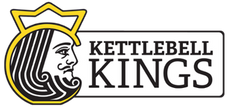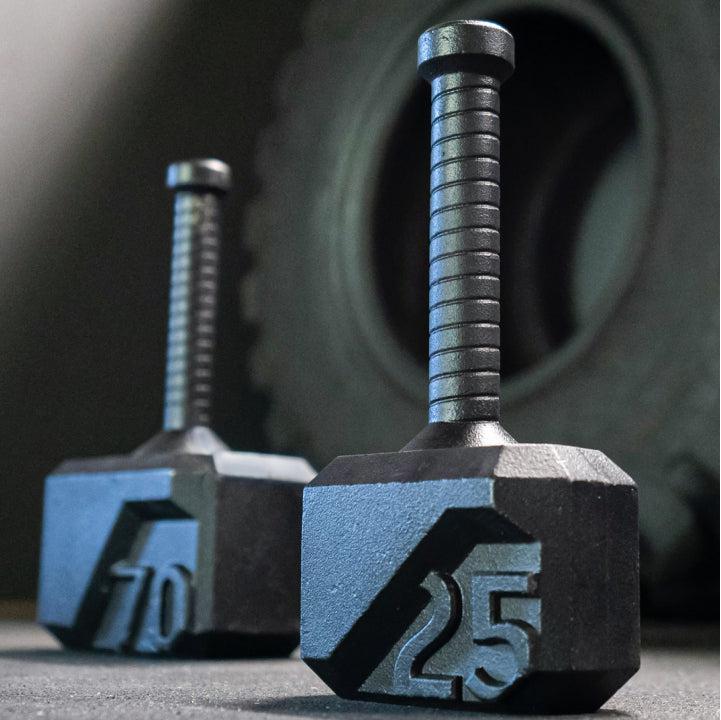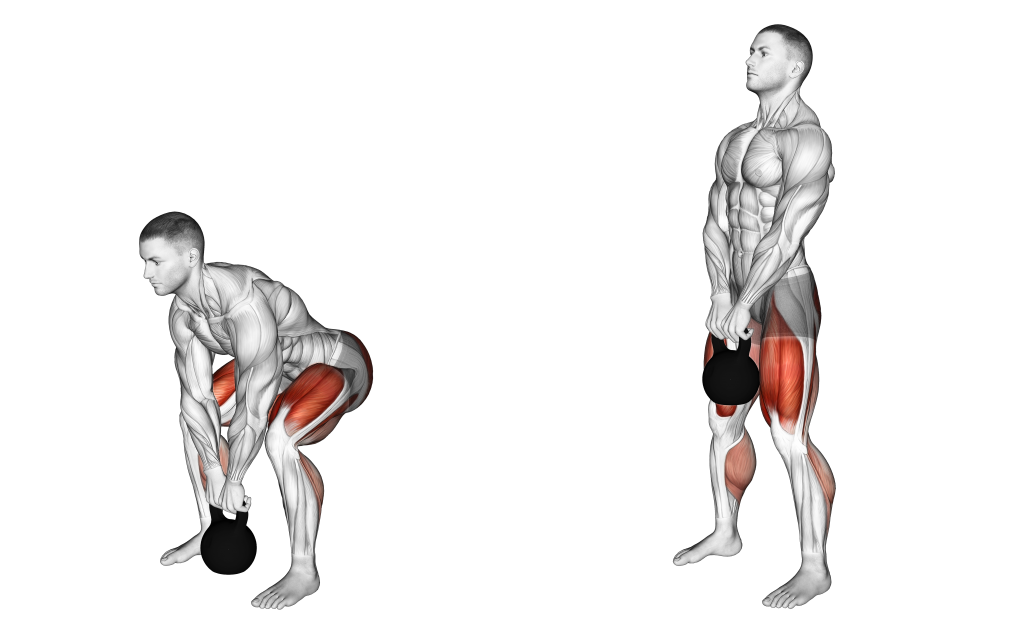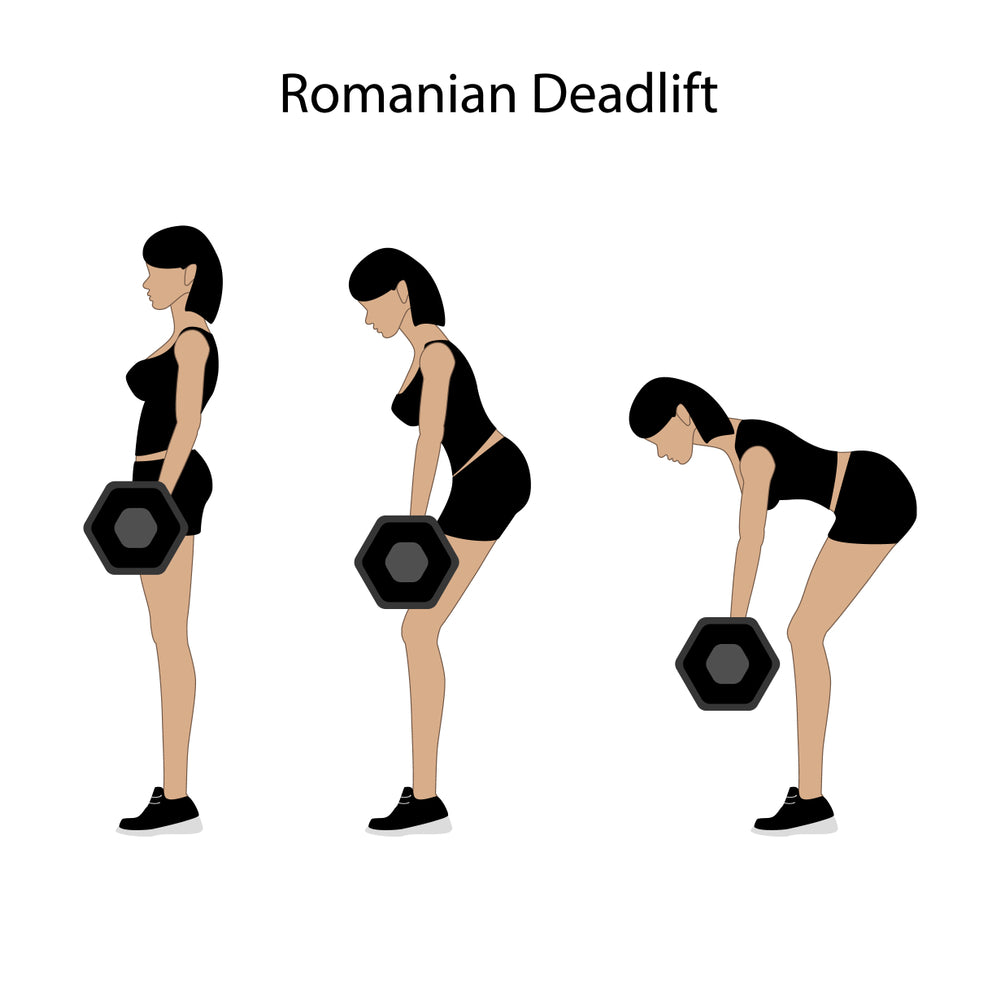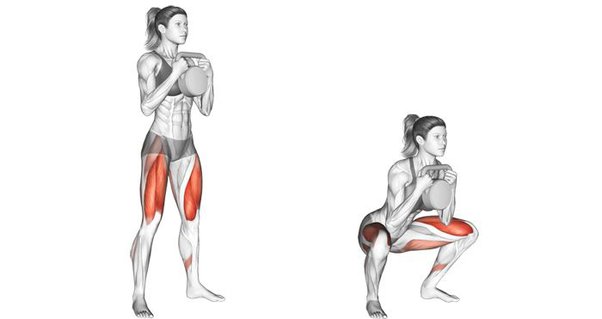Embarking on a fitness journey often involves discovering exercises that stand out for their versatility and effectiveness. One such powerhouse in the realm of strength training is the Kettlebell Romanian Deadlift (KB RDL). This comprehensive guide aims to illuminate the transformative potential of KB RDLs and their impact on your fitness journey.
The KB RDL, a dynamic variation of the traditional deadlift, becomes a focal point in this exploration. Its versatility lies in its ability to engage multiple muscle groups simultaneously. Unlike conventional deadlifts, KB RDLs specifically target the posterior chain, comprising the hamstrings, glutes, and lower back. This nuanced approach not only fosters overall strength but also contributes to improved stability and flexibility.Delving deeper, this guide navigates through the intricacies of KB RDLs, shedding light on the targeted muscle engagement that makes this exercise a transformative force by exploring the benefits, variations, and safety considerations, Whether you're a seasoned fitness enthusiast or just beginning your journey, the KB RDL holds the potential to redefine your approach to strength training.
Can You Do Romanian Deadlifts with a Kettlebell?
Absolutely! The kettlebell Romanian deadlift is a powerful adaptation that introduces unique challenges and benefits to your workout routine. This variation amplifies the engagement of specific muscle groups, providing a dynamic twist to the traditional Romanian deadlift.
What muscles do the Romanian deadlift work?
The KB RDL is a holistic exercise that engages multiple muscle groups, promoting overall lower body strength and stability.
- Hamstrings: Actively involved in controlling the descent and powering the ascent, the hamstrings undergo substantial strengthening, enhancing knee stability.
- Glutes: The gluteus maximus, medius, and minimus play a pivotal role in hip extension during the upward phase, contributing to improved hip strength and stability.
- Lower Back (Erector Spinae): The erector spinae muscles maintain an upright posture throughout the movement, stabilizing the spine and preventing excessive flexion.
- Core Muscles (Rectus Abdominis, Obliques, Transverse Abdominis): Engaged to stabilize the spine and prevent arching or rounding of the back, fostering improved core strength and stability.
- Quadriceps: While not the primary focus, the quadriceps assist in knee extension during the upward phase of the KB RDL.
How to Do Kettlebell Romanian Deadlift
- Stand with feet hip-width apart, holding a kettlebell in front of you with both hands.
- Hinge at the hips while maintaining a slight bend in the knees, lowering the kettlebell towards the ground.
- Keep the back straight, feeling a stretch in the hamstrings.
- Engage the hamstrings and glutes to return to the starting position, maintaining control throughout.
Benefits of Kettlebell Romanian Deadlifts
- The kettlebell variation allows for a greater stretch in the hamstrings, promoting improved flexibility.
- Holding a kettlebell adds a dynamic element, engaging stabilizing muscles and enhancing overall control.
- Targets hamstrings, glutes, lower back, and core for a well-rounded strength development.
Looking for a durable and versatile option, check out the Kettlebell Kings Powder Coat Kettlebell renowned for its reliability and durability.
"For versatile training options, consider exploring our collection of adjustable kettlebells. With adjustable weights, these kettlebells offer flexibility to tailor your workouts to your desired intensity levels.
Kettlebell Romanian Deadlift Variations
Single Kettlebell Romanian Deadlift
How to Do
- Stand with your feet hip-width apart, holding a single kettlebell in one hand in front of you.
- Hinge at the hips while keeping a straight back, lowering the kettlebell towards the ground. The free arm can be extended for balance.
- Similar to the standard KB RDL, engage your hamstrings and glutes to return to the starting position.
- Perform the same number of repetitions on each side.
Benefits
- This variation emphasizes unilateral strength, addressing any muscle imbalances.
- Balancing on one leg enhances stability and engages core muscles.
Sumo Stance Kettlebell Romanian Deadlift
How to Do
- Adopt a wider stance, resembling a sumo squat position, with your toes pointing slightly outward.
- Hinge at the hips, lowering the kettlebell towards the ground while maintaining a straight back.
- Engage your hamstrings and glutes to return to the starting position.
Benefits
- The wider stance engages the inner thighs, providing an additional dimension to the exercise.
- A sumo stance introduces variety to muscle engagement, targeting different areas of the lower body.
Kettlebell Romanian Deadlift to Row
How to Do
- Begin with the standard kettlebell Romanian deadlift, lowering the kettlebell towards the ground.
- At the bottom of the RDL, transition into a rowing motion by pulling the kettlebell towards your chest.
- Engage the upper back muscles during the row, and then return to the starting position.
Benefits
- The rowing motion targets the muscles of the upper back, adding an upper body element to the exercise.
- Combining the RDL with a row creates a compound movement, maximizing muscle engagement and calorie burn.
Safety Tips for Performing Kettlebell Romanian Deadlifts
- Ensure a neutral spine with a slight natural curve in the lower back throughout the movement.
- Lower the kettlebell in a controlled manner, avoiding rapid or jerky movements.
- Begin with a manageable weight to master the technique before progressing.
- Engage in a dynamic warm-up to prepare muscles and joints for the exercise.
- Keep the feet hip-width apart with a slight bend in the knees.
- Breathing Technique: Inhale as you lower the kettlebell and exhale during the upward phase.
Workout Plan for Kettlebell Romanian Deadlift
Beginner
- KB Romanian Deadlifts: 3 sets x 10-12 reps (light to moderate weight)
- Bodyweight Lunges: 3 sets x 12 reps each leg
- Plank: 3 sets x 30 seconds
Intermediate
- KB Romanian Deadlifts: 4 sets x 8-10 reps (moderate to heavy weight)
- Goblet Squats: 3 sets x 12 reps
- Russian Twists: 3 sets x 20 reps (with or without weight)
Advanced
- KB Romanian Deadlifts: 5 sets x 6-8 reps (heavy weight)
- Single-Leg KB Romanian Deadlifts: 3 sets x 10 reps each leg
- Hanging Leg Raises: 3 sets x 15 reps
Real-Life Transformation with Kettlebell Romanian Deadlifts
Monica's Experience
Monica, a busy professional, was drawn to the efficiency of KB RDLs in targeting multiple muscle groups within a short workout window.
She was facing time constraints due to her demanding job, incorporating KB RDLs into her home workout routine. The exercise not only helped her achieve a toned lower body but also enhanced her overall strength. The dynamic challenge of holding a kettlebell added an element of excitement to her workout, making it a staple in her fitness journey.
Daniel's Journey
Daniel, a fitness enthusiast with a history of lower back sensitivity, found that the controlled nature of the KB RDLs allowed him to strengthen his hamstrings and glutes without compromising his back.
He was dealing with occasional lower back discomfort, sought an exercise that would target his hamstrings and glutes without placing undue stress on his lumbar region. The KB RDLs proved to be a game-changer. The emphasis on maintaining a neutral spine during the exercise alleviated the strain on his lower back while effectively engaging the targeted muscle groups.
Addressing Common Questions
What is Kettlebell Deadlift Good For?
Kettlebell deadlifts, including the Romanian deadlift variation, are beneficial for enhancing lower body strength, specifically targeting the hamstrings, glutes, and core muscles. They are also effective for improving hip hinge mechanics and overall flexibility.
What is the Difference Between RDL and DL?
The primary distinction lies in the movement pattern and muscle engagement. While both Romanian deadlifts (RDLs) and traditional deadlifts (DLs) target similar muscle groups, RDLs begin at hip height, focusing on the posterior chain, and involve a controlled descent with a greater emphasis on the eccentric phase. In contrast, conventional deadlifts start from the ground, engaging muscles differently and offering a different range of motion.
Conclusion
In the dynamic realm of strength training, the kettlebell Romanian deadlift (KB RDL) emerges as a versatile and effective exercise. This guide explores its benefits, muscle engagement, variations, and safety considerations. The kettlebell variation amplifies muscle engagement, targeting hamstrings, glutes, lower back, and core, providing a well-rounded approach to strength development with added flexibility and control. Real-life experiences and a tailored workout plan cater to diverse fitness needs, ensuring efficiency for busy lifestyles and addressing specific concerns such as lower back sensitivity.
Tailor your plan to your fitness level, gradually increasing weights for a well-rounded strength training routine. From beginners to advanced users, KB RDLs prove to be a foundational element for unlocking lower body strength. This guide not only provides insights into variations and safety but also answers common questions, making kettlebell Romanian deadlifts an essential tool for those seeking dynamic and effective strength workouts.
Incorporating kettlebell Romanian deadlifts into your strength training regimen can unlock a realm of benefits, from enhanced muscle engagement to improved flexibility. By understanding the mechanics, engaging in variations, and adhering to safety tips, practitioners can embark on a transformative journey towards a stronger, more resilient physique.
